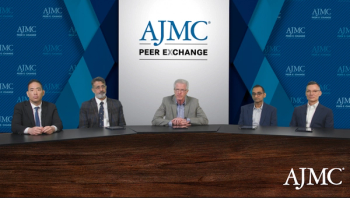
Panelists discuss how emerging DPP1 inhibitor therapies target neutrophil serine proteases to reduce neutrophilic inflammation and neutrophil extracellular trap formation in bronchiectasis.

Panelists discuss how emerging DPP1 inhibitor therapies target neutrophil serine proteases to reduce neutrophilic inflammation and neutrophil extracellular trap formation in bronchiectasis.

Panelists discuss how progressive pulmonary fibrosis (PPF) and idiopathic pulmonary fibrosis (IPF), though distinct in etiology, share a common trajectory of irreversible lung scarring and functional decline—highlighting the importance of recognizing progressive phenotypes across interstitial lung diseases to guide timely diagnosis, personalized treatment, and improved patient outcomes.
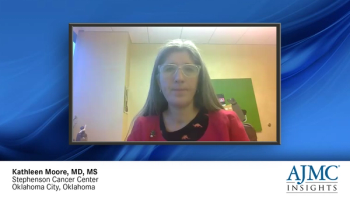
Innovative therapies for ovarian cancer, including engineered T cells and antibody-drug conjugates, show promise in improving patient outcomes.

Panelists discuss how surgical approaches for bronchiectasis have evolved from open thoracotomy to minimally invasive techniques (VATS or robotic assisted), reducing hospital stays from 5 to 7 days to 1 to 3 days and recovery time from 6 to 8 weeks to 2 to 6 weeks.

Panelists discuss how to balance the clinical benefits of Bruton tyrosine kinase (BTK) inhibitor therapies with their associated costs when making treatment decisions for chronic lymphocytic leukemia (CLL) and mantle cell lymphoma (MCL), considering both patient outcomes and financial constraints.

Panelists discuss the primary access challenges in chronic lymphocytic leukemia (CLL) and mantle cell lymphoma (MCL) treatment, including financial barriers and health care system limitations, and how these obstacles impact patient outcomes and treatment efficacy.
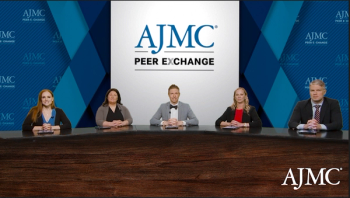
Panelists discuss how alectinib use in the adjuvant setting might shift sequencing strategies in metastatic ALK+ non–small cell lung cancer (NSCLC) and how resistance mutations influence post-frontline therapy selection.
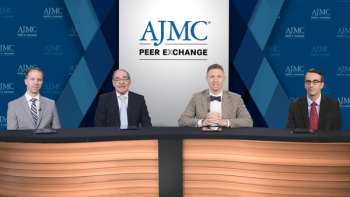
Panelists discuss how step-therapy for immunoglobulin A (IgA) nephropathy is evolving toward a more personalized approach, starting with optimized supportive care before progressing to targeted therapies based on risk stratification, disease characteristics, and biomarker profiles.

Panelists discuss how to overcome barriers to comprehensive molecular testing and how to prioritize treatment when ALK+ non–small cell lung cancer (NSCLC) coexists with other actionable biomarkers.

Panelists discuss how patient-reported outcomes including symptom burden, treatment-related adverse effects, preserved functionality, and impact on quality of life should be prioritized alongside traditional clinical measures when assessing the value of immunoglobulin A (IgA) nephropathy therapies.

A panelist discusses how immune thrombocytopenia (ITP) is characterized by isolated low platelet counts due to autoimmune destruction, with classification based on duration (acute, extended, or chronic) and severity of thrombocytopenia.
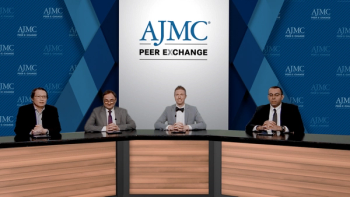
Panelists discuss how MEK inhibitors, such as trametinib and selumetinib, are emerging as first-line treatments for symptomatic NF1-associated plexiform neurofibromas, especially in progressive or inoperable cases, while emphasizing the importance of surgical resection, pain management, physical therapy, and psychosocial support for improving quality of life.

Panelists discuss the current management goals for NF1-associated plexiform neurofibromas, focusing on tumor control, symptom management, and prevention of malignant transformation, while highlighting the evolving future goals of targeted therapies, personalized treatment plans, and enhanced early detection to improve outcomes.
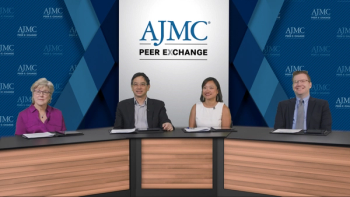
Panelists discuss how the current spinal muscular atrophy (SMA) treatment landscape includes 3 options: gene therapy (onasemnogene abeparvovec [Zolgensma]) for younger patients and 2 splice modifiers (nusinersen [Spinraza] and risdiplam [Evrysdi]) for older patients.

Panelists discuss how biosimilars for adalimumab have faced unique challenges in the prescription benefit space compared with earlier oncology biosimilars, highlighting the importance of interchangeability designation, advance planning, and stakeholder education when implementing biosimilar adoption strategies.

Panelists discuss how the Inflation Reduction Act (IRA) of 2022 has influenced biosimilar utilization in the US health care system through its pharmacy provisions targeting Medicare patients, examining institutional impacts on adoption patterns, exploring payer preferences between high- and low-wholesale acquisition cost (WAC) therapies under the new regulatory framework, forecasting the evolving role of biosimilars at health care institutions, and identifying persistent barriers to uptake alongside potential strategies to overcome these challenges.

Panelists discuss how supportive care for patients with spinal muscular atrophy (SMA) includes rehabilitation, respiratory care, psychosocial support, and multidisciplinary approaches to help patients achieve independence and improved quality of life.
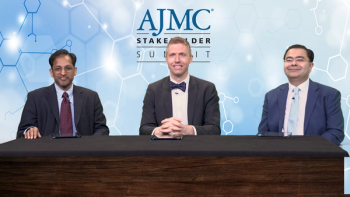
Panelists discuss how pulmonary arterial hypertension diagnosis requires comprehensive evaluation including right heart catheterization to confirm hemodynamic criteria, with normal mean PA pressure being ≤20 mmHg and the need to rule out other causes of pulmonary hypertension.

Panelists discuss how the pathophysiology of pulmonary arterial hypertension involves complex mechanisms across multiple genetic and treatment pathways, with over 20 identified genes and four major therapeutic targets including nitric oxide, endothelin, prostacyclin, and activin signaling inhibition.

Panelists discuss how progressive pulmonary fibrosis (PPF) and idiopathic pulmonary fibrosis (IPF), though distinct in etiology, share a common trajectory of irreversible lung scarring and functional decline—highlighting the importance of recognizing progressive phenotypes across interstitial lung diseases to guide timely diagnosis, personalized treatment, and improved patient outcomes.

Panelists discuss how idiopathic pulmonary fibrosis (IPF), a progressive and often fatal interstitial lung disease, presents significant clinical challenges due to its variable trajectory, limited treatment options, and poor prognosis—underscoring the importance of early diagnosis and specialized care and the need for therapies that can more effectively alter disease progression.

Explore the latest advancements in ovarian cancer treatment, focusing on combination therapies and innovative approaches for platinum-resistant patients.

Panelists discuss how the heterogeneity of bronchiectasis requires precise phenotyping and a treatable traits approach to address varying symptom profiles, from cough-predominant to shortness of breath–predominant presentations.

Panelists discuss how preventing bronchiectasis exacerbations involves understanding a patient’s past exacerbation pattern, implementing comprehensive airway clearance, patient education, and early intervention.

Explore the importance of clinical trials for ovarian cancer treatments, highlighting innovative therapies and the need for early patient access.

Panelists discuss how proactive patient education, lipid-lowering interventions, and monitoring tools can help patients stay on ALK inhibitor therapy to realize long-term benefits.

Panelists discuss how disease-modifying therapies for immunoglobulin A (IgA) nephropathy, though initially more expensive than symptomatic treatments, offer substantial long-term cost benefits by preventing progression to kidney failure and avoiding the enormous expenses of dialysis and transplantation.

Panelists discuss how early diagnosis of immunoglobulin A (IgA) nephropathy enables timely interventions that can significantly reduce long-term costs by delaying progression to advanced kidney disease, preventing complications, and minimizing the need for expensive renal replacement therapies.

Panelists discuss how lorlatinib’s unique adverse event (AE) profile, including cognitive effects, hypercholesterolemia, and peripheral neuropathy, impacts treatment selection and patient management.

Panelists discuss the unmet needs in NF1-associated plexiform neurofibromas, highlighting gaps in effective treatment, pain management, psychosocial support, and prevention of malignant transformation, while emphasizing the importance of early intervention, multidisciplinary care, and ongoing research into targeted therapies and improved surveillance protocols.

259 Prospect Plains Rd, Bldg H
Cranbury, NJ 08512
© 2025 MJH Life Sciences®
All rights reserved.
